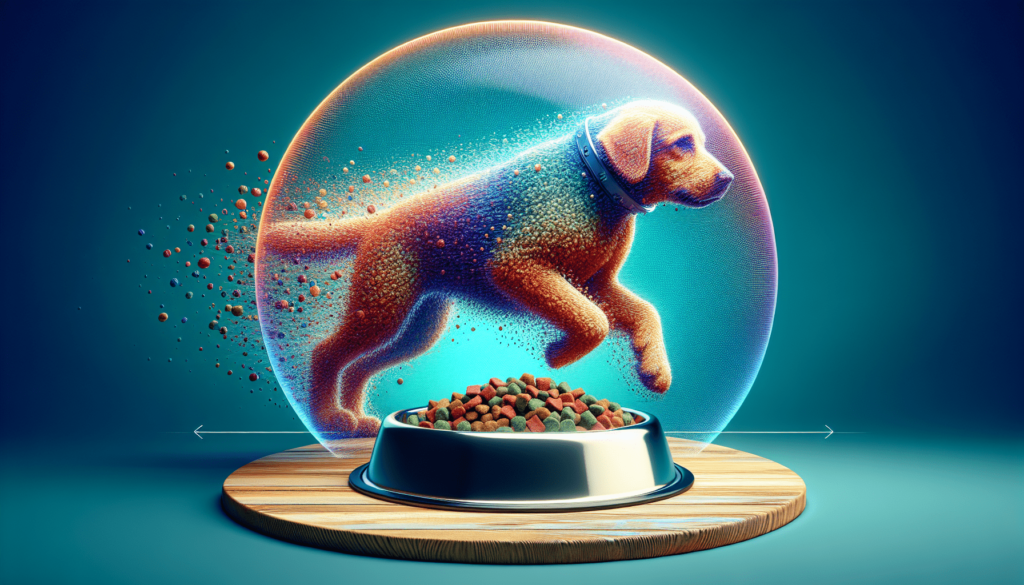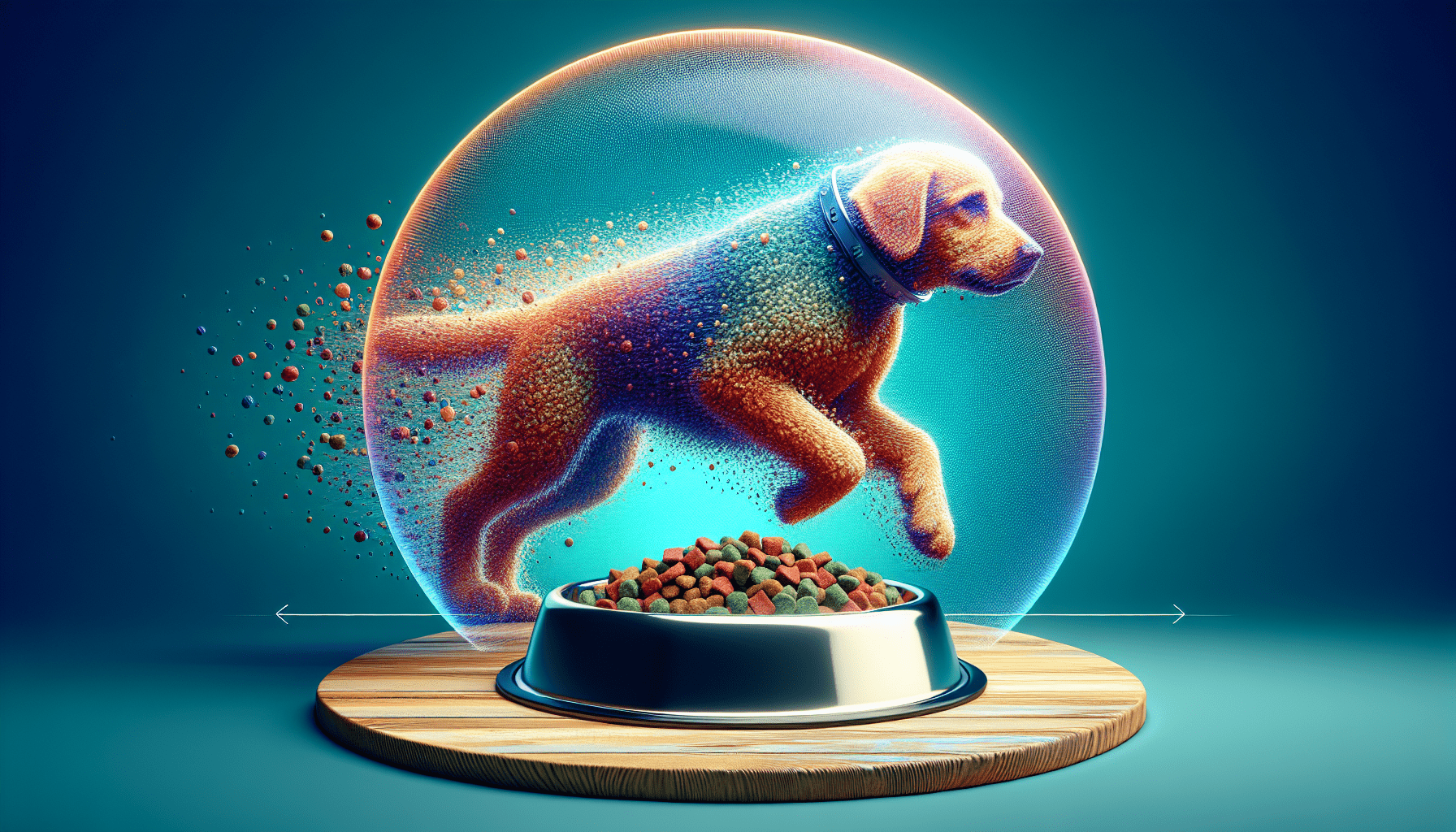Are you struggling with food aggression in your beloved canine companion? It is not uncommon for dogs to exhibit aggressive behavior when it comes to their food, but it is important to understand the root causes and ways to manage this issue. In this article, we will explore the reasons behind food aggression in dogs and provide practical tips and techniques to help you and your furry friend overcome this behavioral challenge. With patience, consistency, and understanding, you can create a harmonious and stress-free mealtime experience for both you and your dog. So, let’s dive in and learn how to address food aggression in dogs!

What is Food Aggression
Food aggression refers to a specific behavior in dogs where they display possessiveness and aggression towards their food. This behavior can range from mild growling or guarding to more severe cases where the dog may bite or attack anyone who comes near its food. Understanding and managing food aggression is crucial for the safety of both humans and other animals in the household, as well as the overall well-being and happiness of the dog.
Defining Food Aggression
Food aggression can be defined as a form of resource guarding, where the dog perceives its food as a valuable resource that needs to be protected. This behavior is instinctual and can be observed in many animal species, including dogs. Dogs that display food aggression may show a range of behaviors such as growling, snapping, biting, or even lunging at anyone who approaches their food. It is important to note that food aggression can occur in any breed or size of dog and is not limited to specific breeds.
Causes of Food Aggression
There are several factors that can contribute to the development of food aggression in dogs. These include genetics, previous experiences with food scarcity or competition, lack of socialization, and learned behavior. Some dogs may have a genetic predisposition towards resource guarding, while others may learn this behavior as a result of negative experiences in their past. Lack of proper socialization during their early development stages can also contribute to the development of food aggression.
Recognizing Food Aggression Behavior
It is important for dog owners to be able to recognize the signs of food aggression in their pets. This can help prevent potential hazards and allow for early intervention. Some common signs of food aggression include growling, snapping, showing teeth, stiff body posture, guarding food or food bowl, and excessive eating or gulping down food. It is essential to pay attention to these behavioral cues and take appropriate action to manage the food aggression effectively.
Understanding the Triggers
In order to effectively manage food aggression in dogs, it is necessary to understand the triggers that lead to aggressive behavior. By identifying these triggers, dog owners can implement strategies to prevent or minimize the occurrence of food aggression episodes.
Factors that trigger Food Aggression
Food aggression can be triggered by various factors, such as the presence of other animals or humans near the food, the feeling of competition or threat, and the anticipation of a possible food shortage. Dogs may also exhibit signs of food aggression if they feel anxious, stressed, or uncomfortable in their feeding environment. Identifying these triggers can help dog owners create a safe and controlled feeding environment for their pets.
Identifying specific triggers in your dog
Each dog is unique, and the triggers for food aggression may vary from one individual to another. It is important for dog owners to observe and identify the specific triggers that lead to food aggression in their own dogs. This can be done by closely monitoring the dog’s behavior during feeding time and noting any patterns or changes in their behavior. By understanding these triggers, dog owners can take appropriate measures to address and manage food aggression effectively.
Effects of Food Aggression
Food aggression can have negative impacts on a dog’s behavior, as well as potential dangers to humans and other animals. Additionally, food aggression can also influence the dog’s overall health.
Negative impacts on dog’s behavior
Food aggression can lead to a variety of negative behaviors in dogs. They may become more possessive, aggressive, or reactive in other areas of their lives. It can also lead to increased stress and anxiety, which can further contribute to aggressive behavior. Furthermore, food aggression can strain the relationship between the dog and its owners or other family members, resulting in a lack of trust and bonding.
Potential dangers to humans and other animals
Food aggression poses a significant risk to humans and other animals in the household. A dog displaying food aggression may bite or attack anyone who comes near its food, leading to serious injuries. This behavior can be particularly dangerous for children, as they may not fully understand the potential risks involved. Additionally, other animals in the household may also become targets of the dog’s aggression, resulting in conflicts and potential harm.
Influencing dog’s overall health
Food aggression can affect a dog’s overall health and well-being. Dogs that exhibit food aggression may consume their meals at a rapid pace, leading to issues such as choking, gastrointestinal problems, or obesity. Additionally, the heightened stress and anxiety associated with food aggression can negatively impact the dog’s immune system, digestion, and overall quality of life. Therefore, addressing and managing food aggression is not only important for the safety of humans and other animals, but also for the dog’s physical and mental health.
Preventing Food Aggression
Prevention is key when it comes to managing food aggression in dogs. By implementing certain strategies and creating a positive feeding routine, dog owners can help prevent the occurrence or escalation of food aggression behavior.
Early socialization and positive training
One of the most effective ways to prevent food aggression is through early socialization and positive training. Exposing puppies to various people, animals, and environments from an early age can help them develop appropriate behaviors and reduce the likelihood of resource guarding. Positive reinforcement training techniques, such as reward-based training, can also encourage dogs to associate positive experiences with food and reduce the chance of food aggression.
Establishing a feeding routine
Establishing a consistent feeding routine can help prevent food aggression in dogs. By feeding them at the same time and in the same location every day, dogs can develop a sense of predictability and security around their meals. This routine can also help minimize the feeling of competition or scarcity that may trigger food aggression. Additionally, it is important to ensure that the feeding area is calm and free from distractions.
Introducing variety in feeding
Introducing variety in feeding can help prevent food aggression by eliminating the fear of scarcity or competition. Offering a variety of food options, such as rotational feeding or using puzzle toys, can make mealtime more engaging and enjoyable for the dog. This can reduce the dog’s possessiveness over one specific type of food and promote a positive and relaxed atmosphere during feeding.
Avoiding situations that can trigger aggression
Avoiding situations that can trigger food aggression is essential for managing this behavior. This may include keeping other animals or individuals away from the dog’s feeding area, providing ample space for the dog to eat without feeling threatened, and avoiding sudden movements or actions that may startle the dog. By minimizing potential triggers, dog owners can create a safe and stress-free environment for their pets.

Managing Food Aggression
Managing food aggression requires a combination of professional help, creating a safe feeding environment, implementing behavior modification techniques, and understanding the dog’s body language.
Getting professional help
For severe cases of food aggression, it is advisable to seek professional help from a certified dog behaviorist or trainer who specializes in aggression issues. These professionals can assess the dog’s behavior, provide personalized guidance, and create a customized training plan to address the food aggression effectively. Working with a professional ensures that the dog’s specific needs are understood and addressed appropriately.
Creating a safe feeding environment
Creating a safe feeding environment is crucial for managing food aggression. This includes providing a quiet and secure space for the dog to eat without feeling threatened or anxious. Feeding stations or puzzles can be utilized to create a physical barrier between the dog and its food, allowing the dog to eat at its own pace and reducing the likelihood of guarding behavior. It is important to ensure that other animals or individuals are kept away from the feeding area to prevent potential conflicts.
Implementing behavior modification techniques
Behavior modification techniques can be used to address food aggression in dogs. These techniques involve rewarding the dog for displaying desired behaviors, such as remaining calm or allowing humans near their food. Positive reinforcement, such as treats or praise, can be used to reinforce these behaviors. Additionally, counterconditioning and desensitization exercises can help the dog develop positive associations with humans or other animals being near their food, reducing the aggressive response.
Understanding your dog’s body language
Understanding your dog’s body language is essential for managing food aggression. Dogs often communicate their emotions and intentions through their body language. By learning to recognize the subtle signs of stress or anxiety, such as tense muscles, a lowered head, or a stiff body posture, dog owners can intervene and prevent the escalation of aggressive behavior. It is important to respect the dog’s boundaries and avoid pushing them beyond their comfort zone.
Training and Behavior Modification
Training and behavior modification techniques play a crucial role in managing food aggression in dogs. By employing positive reinforcement, counterconditioning methods, desensitization exercises, and creating a calm feeding routine, dog owners can effectively address and reduce food aggression behavior.
Positive reinforcement training techniques
Positive reinforcement training techniques involve rewarding the dog for displaying desired behaviors. This can be done by providing treats, praise, or other rewards whenever the dog remains calm or allows humans near its food. These rewards help reinforce the idea that good behavior is rewarded, making the dog more likely to repeat the desired behavior in the future.
Counterconditioning methods
Counterconditioning involves changing the dog’s emotional response to specific triggers, such as humans approaching their food. This is done by pairing the trigger with something positive, such as treats or playtime, so that the dog begins to associate the trigger with positive experiences. Over time, this can help reduce the dog’s aggressive response and create a more positive association with food-related situations.
Desensitization exercises
Desensitization exercises involve gradually exposing the dog to the trigger that causes food aggression, starting at a distance or intensity that does not cause an aggressive response. The distance or intensity is then gradually increased over time, allowing the dog to become more comfortable and less reactive to the trigger. This gradual approach helps the dog build positive associations and reduces the likelihood of aggressive behavior.
Creating a calm feeding routine
Creating a calm feeding routine is essential for managing food aggression. This involves establishing a consistent routine for feeding, with minimal distractions or disruptions. Feeding the dog in a controlled and calm environment can help reduce stress and anxiety, making it less likely for the dog to display aggressive behavior. It is important to maintain a calm demeanor and avoid rushing or approaching the dog’s food in a confrontational manner.
Working with a Professional
Working with a professional dog behaviorist or trainer can greatly assist in managing food aggression. Their expertise and experience in dealing with aggression issues can provide valuable guidance and support for dog owners.
Finding the right dog behaviorist
Finding the right dog behaviorist or trainer is crucial for addressing food aggression effectively. It is important to look for professionals who have experience and knowledge in dealing with aggression issues, particularly in the context of resource guarding. Reading reviews, seeking recommendations from trusted sources, and interviewing potential behaviorists can help in finding the right match for your dog’s needs.
Consulting a veterinarian
Consulting a veterinarian is also advisable when dealing with food aggression in dogs. They can rule out any underlying medical conditions that may contribute to the aggressive behavior and provide advice on managing the aggression effectively. Additionally, they may be able to recommend medication or other interventions that can support behavior modification efforts.
Developing a personalized training plan
A professional behaviorist or trainer can work with dog owners to develop a personalized training plan to address food aggression. This plan takes into consideration the specific needs and triggers of the dog and provides step-by-step guidance on how to modify the behavior effectively. Regular follow-ups and adjustments to the plan may be necessary to ensure progress and success.
Safety Measures
Implementing safety measures is crucial when managing food aggression in dogs. These measures help prevent potential conflicts or injuries during feeding time.
Separating dogs during feeding
If there are multiple dogs in the household, it is important to separate them during feeding to prevent any competition or conflicts. Feeding dogs in separate rooms or using barriers can create a safe and controlled environment where each dog can eat without feeling threatened. This can help reduce the chances of food aggression and create a more peaceful feeding routine.
Implementing feeding stations or puzzles
Implementing feeding stations or puzzles can also help manage food aggression in dogs. These devices can slow down the eating process and provide mental stimulation, reducing the likelihood of possessive or aggressive behavior. Feeding stations or puzzle toys can be used to replace traditional food bowls, creating a more engaging and interactive feeding experience for the dog.
Restricting access to food sources
Restricting access to food sources can prevent potential conflicts or resource guarding behavior. Dogs should not have unsupervised access to food or food storage areas. Storing food securely and ensuring that it is out of reach for the dog can minimize the chances of food aggression. It is also important to teach children and other family members to avoid approaching the dog’s food or disturbing them during mealtime.
Ensuring a Peaceful Environment
Creating a peaceful environment is essential for managing food aggression in dogs. By reducing stress and anxiety and providing mental and physical stimulation, dog owners can help create a calm and balanced atmosphere in the household.
Reducing stress and anxiety
Reducing stress and anxiety is crucial for managing food aggression. Dogs that are stressed or anxious are more likely to exhibit aggressive behavior, including food aggression. Providing a safe and secure environment, with minimal loud noises or disturbances, can help reduce stress levels. Additionally, regular exercise, mental stimulation, and incorporating relaxation techniques, such as calming music or massage, can help reduce anxiety in dogs.
Providing mental and physical stimulation
Providing adequate mental and physical stimulation is important for a dog’s overall well-being and can help prevent or alleviate food aggression. Engaging in regular play sessions, interactive games, and training exercises can help satisfy the dog’s mental and physical needs. This can help channel their energy into positive outlets and reduce the likelihood of aggressive behavior.
Maintaining a calm household
Maintaining a calm household environment is crucial for managing food aggression. Dogs are highly sensitive to their surroundings and can pick up on stress or tension within the household. Establishing consistent routines, maintaining a calm demeanor, and avoiding confrontational situations can create a peaceful atmosphere that promotes relaxation and reduces the likelihood of aggressive behavior. It is important for all family members to be on the same page and understand the importance of maintaining a calm and positive environment for the dog.
Monitoring Progress
Monitoring progress is essential when managing food aggression in dogs. By tracking improvements in behavior, maintaining consistent training and routines, and seeking professional support if necessary, dog owners can ensure long-term success in managing food aggression.
Tracking improvements in behavior
Keeping a record of the dog’s behavior and progress can help monitor improvements over time. This can involve noting any changes in the dog’s body language, frequency or intensity of aggressive behaviors, and reactions to specific triggers. By tracking these improvements, dog owners can have a better understanding of what strategies and techniques are effective in managing food aggression.
Maintaining consistent training and routines
Consistency is key when it comes to managing food aggression in dogs. It is important to maintain consistent training and feeding routines to reinforce desired behaviors and promote a sense of predictability and security for the dog. Following the established training plan, providing regular reinforcement, and avoiding any deviations from the routine can help maintain progress and prevent relapses.
Continuing professional support if necessary
If progress is slow or the aggression persists despite efforts to manage it, it may be necessary to continue seeking professional support. A certified dog behaviorist or trainer can provide ongoing guidance, adjust the training plan if needed, and offer additional strategies or interventions to address the food aggression effectively. Ongoing professional support can ensure that the dog’s needs are met and that progress continues to be made in managing food aggression.

